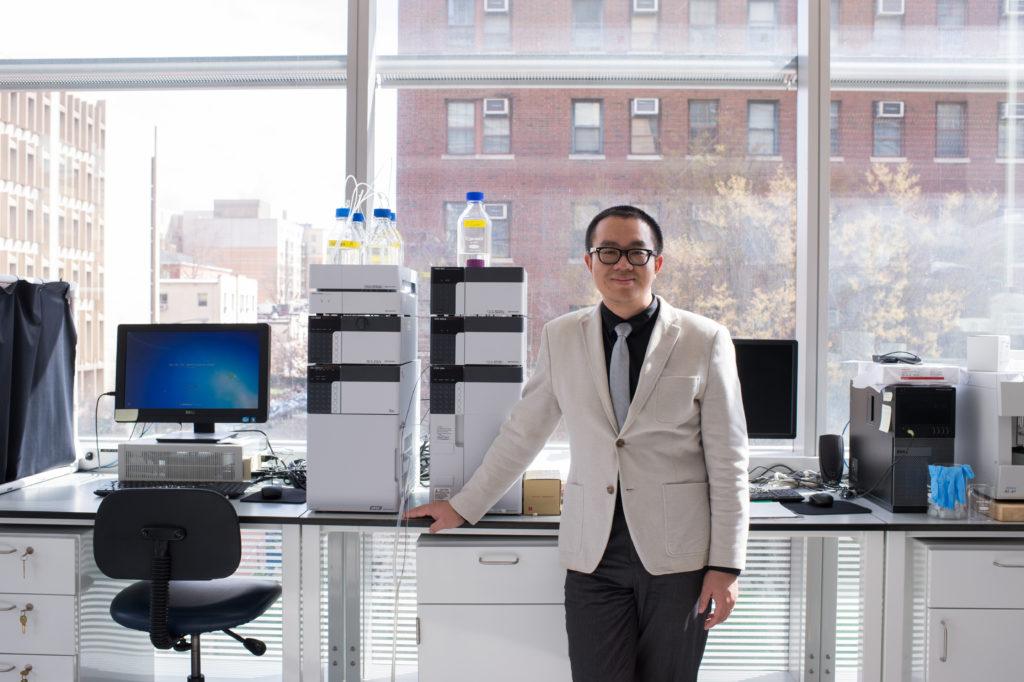A School of Engineering and Applied Sciences professor produced a cluster of particles that can make disinfectants two to four times more likely to kill coronavirus and norovirus strains than the commercial standard.
Danmeng Shuai, the study’s lead author and an associate professor of civil and environmental engineering, said researchers engineered the nanomaterial – microscopic materials found in nature measured between one and 100 nanometers – that households, health care settings and food production facilities can use to kill diseases on surfaces, water and in the air. He said consumers can use less of the disinfectant because its efficacy is still prevalent in small doses.
Shuai said environmental engineering scientists use nanomaterials as catalysts to create chemical reactions with real-world applications, like powering electronic devices and conducting heat. He said the common practice of adding precious metals, like platinum and gold, to catalyze nanomaterials costs more than his team’s strategy of crafting nanomaterials with iron for disinfectants.
He said nanomaterials facilitate oxidation, a chemical process that results in a loss of electrons and releases energy in the form of heat, in common disinfectants like hydrogen peroxide and alcohols to kill pathogens – an organism that causes diseases to a host – and disinfect materials faster.
“Even with a very low concentration of the disinfectant, we can still achieve the desired disinfection performance,” Shuai said. “That’s the reason why we hope to increase the sustainability of our society.”
Shuai said nanomaterials can reduce the consumption of cleaning products on the market, which would be better for the environment because excess disinfectant can seep into natural water through wastewater management and damage ecological systems.
Shuai said the researchers tested the nanomaterial disinfectant in water from the Potomac River and in saliva to ensure it could kill pathogens in water, like norovirus, and those present on hard surfaces, like coronavirus strains. He said the use of saliva in testing, which researchers used to simulate pathogens on surfaces, helped researchers determine that households and health care settings can use the disinfectant.
Shuai said he hopes developing countries will use the disinfectant to purify water where there is limited access to clean water. He said the disinfectant can clean commercial food production facilities that easily acquire pathogens.
“We believe that if we can advance this type of catalyst, it can be potentially utilized to support larger-scale water treatment and indoor applications,” Shuai said.
Experts in microbiology and environmental engineering said while the study’s disinfectant has a variety of applications – like water, surfaces and air – households and hospitals may not use the disinfectant for months because of the Environmental Protection Agency’s one-to-three-month process.
Mark Sobsey, a research professor in the department of environmental science and engineering at the University of North Carolina-Chapel Hill, said the nanomaterial could increase sustainability within the disinfectant field because the iron catalyst can disinfect viruses faster with less peroxide. He said the disinfectant can purify air, water and surfaces at food production facilities and recreational water systems that use peroxide disinfectants.
He said the EPA has approved hundreds of widely used disinfectants for health care and consumer disinfectant applications, so the researchers would face a “tough market” to compete even with the disinfectant’s efficacy.
Sobsey said for the disinfectant to develop into commercial products, the researchers would need to go through a “lengthy” EPA approval process even though the nonmaterial can increase the performance of existing disinfectants when mixed. He said the EPA can typically take months to years to register a modified disinfectant.
“It’s an important and interesting piece of work,” Sobsey said. “Sometimes new findings like that do eventually get to make changes and achieve practical use in the real world. It’s not necessarily going to result in immediate applications in the short term. It’s likely to be measured in timeframes from many months to a few years.”
Donald Schaffner, a professor of food microbiology at Rutgers University, said the disinfectant’s two to four-time increase in efficacy is notable, but a rise by at least 10 times would be a more “profound” breakthrough.
He said while nanomaterial technology may not be the most effective at stymying the spread of coronavirus disease because it does not predominantly transmit through surfaces, researchers may apply the study to other areas of microbiology, like disinfecting wastewater and killing nonanimal viruses like norovirus.
“This is an incremental advance, and it certainly is moving us in the right direction finding ways to do more with less,” Schaffner said.
Dipanjan Pan, the Huck Chair Professor in nanomedicine at Pennsylvania State University, said the research stands out from other studies in the field because the nanomaterials focus on virus inactivation, making it functional to kill pathogens “universally.” He said the study is in the early stages of research but will propel future research to create more eco-friendly and effective disinfectants.
“They know that this works in principle, but what they will try to do next, they will try to form the uniform coding and to see how this is actually working in theory, working in practice in real-world scenarios,” Pan said.







